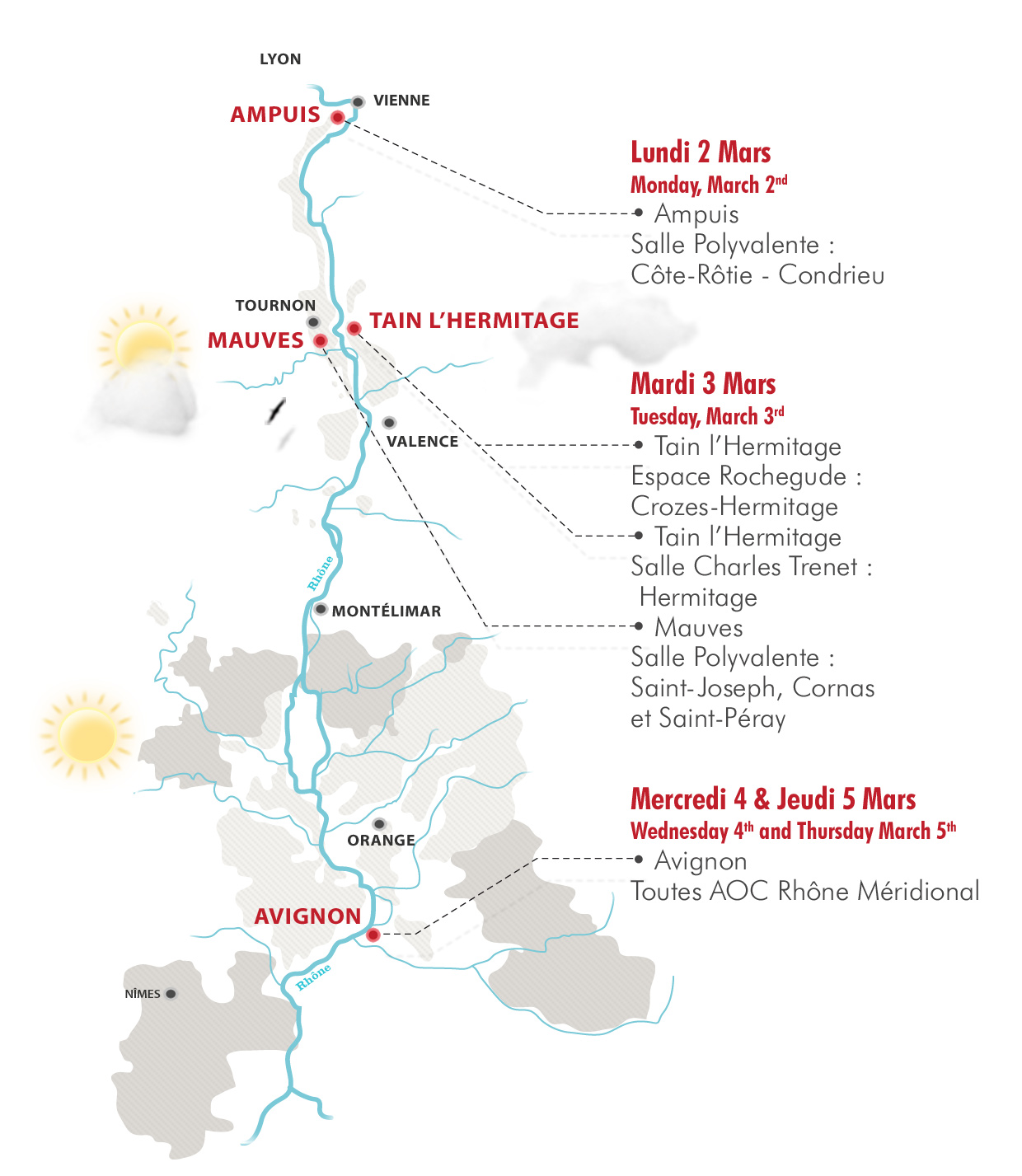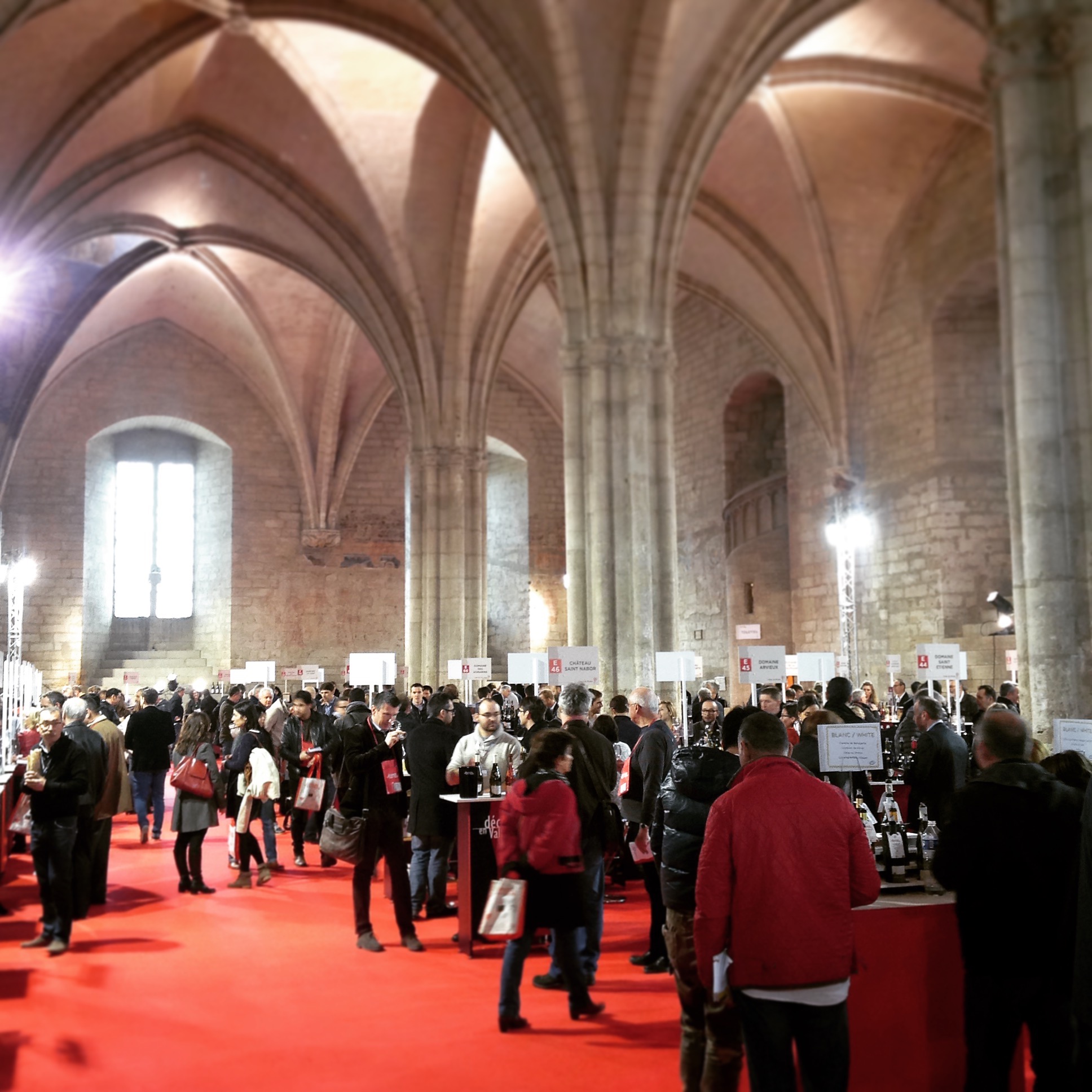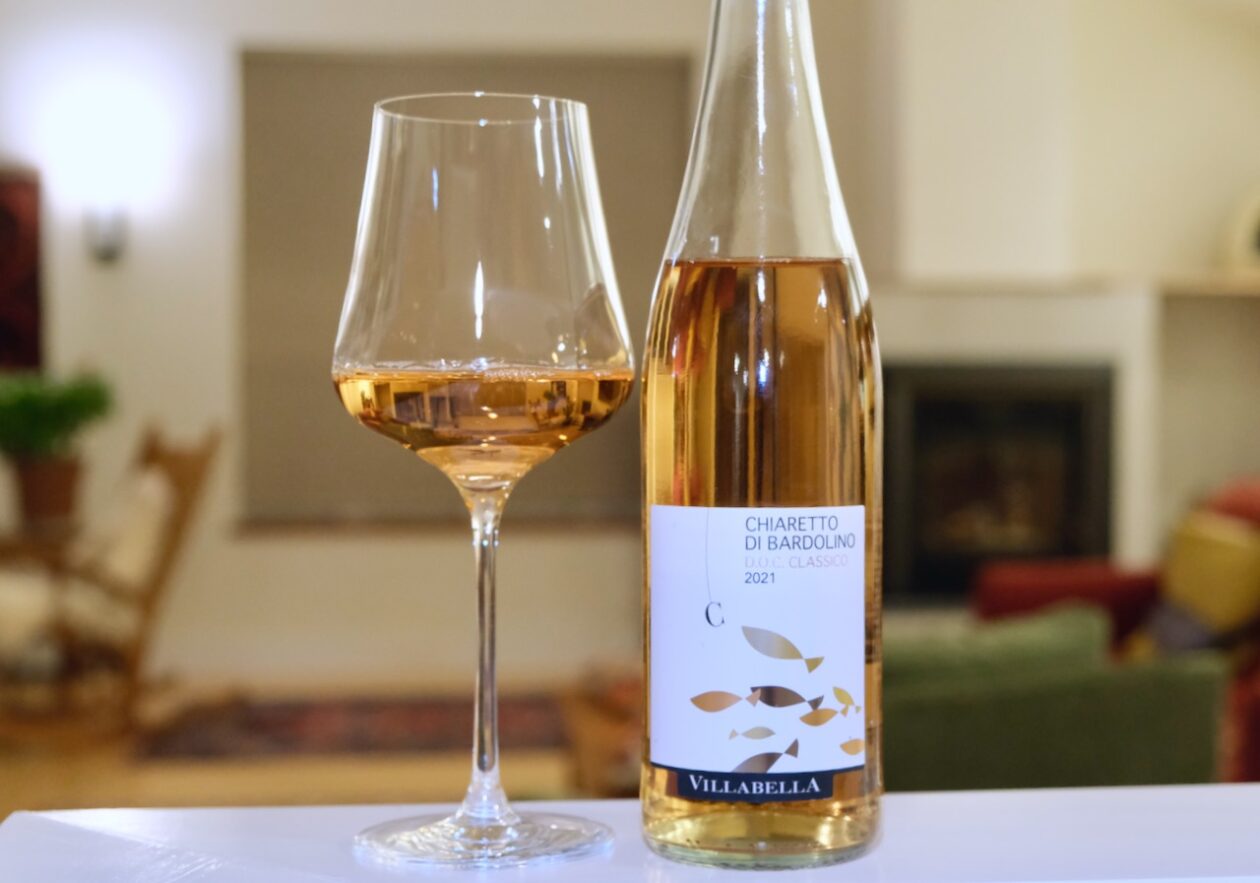I’ve just returned from Découvertes en Vallée du Rhône, a biennial four-day tasting hosted by regional wine consortium InterRhône, which was my sponsor. The event provides an opportunity for more than 650 winegrowers from the Rhône Valley to pour their wine for thousands of trade and press visitors. This particular press visitor wanted to taste them all.

I took 225 formal tasting notes during Découvertes, although with dinners and after-parties I likely tasted more than 250 wines.
Still, that’s a small fraction of the thousands of wines poured during one packed week, and at a tasting of this scope, it’s important to have a plan. I targeted certain regions, producers, and styles that compel me: Hermitage, Côte-Rôtie, Condrieu, Vacqueras, Châteauneuf du Pape; Cuilleron, Brunier, Clusal-Roch, Texier, Gangloff; white wines from red regions, red wines from altitude, wines from new Côtes du Rhône Villages AOPs. I could go on.
I returned with a notebook filled with superlatives, and I’m looking forward to sharing my discoveries here and elsewhere. But where to begin?
With Muscat de Beaumes-de-Venise, for two reasons. First, because I’ve long admired this vin doux naturel from the southern Rhône, one of the very few sweet wines made regionally. It’s special and beautiful, but too often overlooked.
Second, because the grape, Muscat Blanc à Petits Grains, was possibly the very first vine cultivated in France. It found its way across the Mediterranean from ancient Greece or Rome—ampelographic evidence is murky—and gained a toehold especially around Narbonne and Marseilles.
Today, in Beaumes-de-Venise, just northeast of Avignon, the vines cling to narrow terraces along the Dentelles de Montmirail, that dramatic, jagged ridge of Jurassic limestone that juts west from Mount Ventoux. The grape’s small berries and concentrated perfume produce a dessert wine with notes of honeyed apricots and white flowers, its sweetness balanced by vibrant acidity. It’s exquisite with apple and fruit desserts, crème brûlée, and cheese.
Below are brief tasting notes on twelve Muscats de Beaumes-de-Venise (all are media samples, naturellement). I tasted every one available in the salons, and while there were a few that read as volatile or overly sweet, I found many to adore. This proves merely that it’s a hard wine to get right—but when it’s right, it sings.
And so, I suppose, here’s one final reason to start with this wine: Life is sweet.
2013 Domaine de Beaumalric Muscat de Beaumes-de-Venise
Redolent of ripe and dried apricots, green tea, candied ginger, beeswax, and pear. It’s medium-sweet with a juicy back palate, and the pear re-emerges in the languid finish. Highly recommended.
2013 Domaine de la Pigeade Muscat de Beaumes-de-Venise
Honey and lemon with sharp citrus top notes mingle with jasmine floral aromatics. It’s citrusy on the palate, too, with more honey-lemon and great finishing acidity. Highly recommended.
2013 Domaine des Bernardins Muscat de Beaumes-de-Venise
Soft and lavish, with abundant pear and acacia honey. An extremely sweet style that might benefit from a little more acid.
2013 Domaine Font Sant Muscat de Beaumes-de-Venise
Volatile with a whiff of Brett; a wine out of balance.
2014 Domaine Bouletin Muscat de Beaumes-de-Venise
More herbaceous than the others, with a hint of sweetgrass mixing with honey and ripe pears. Quite sweet but impeccably balanced. Highly recommended.
2012 Domaine de Durban Muscat de Beaumes-de-Venise
Highly volatile and overly candied—surprising for this reputable producer. I’d like to try another bottle.
2013 Domaine de Fenouillet Muscat de Beaumes-de-Venise
Sweetgrass mingles with laurel, Meyer lemon, honey, and ginger. A lively flare of acid refreshes the finish. Organically grown.
2014 Domaine L’Arche des Garances Muscat de Beaumes-de-Venise
Sweet and uncomplicated, with notes of straw and a touch of Brett. Organically grown.
2012 Domaine des Richards Muscat de Beaumes-de-Venise
This wine is fresher than the others, offering jonquil and paperwhites, lily of the valley. Silky-textured with medium acidity, it finishes with sweetgrass and ginger. Highly recommended.
2014 Domaine de Coyeaux Muscat de Beaumes-de-Venise
Very fresh and bright, with a sweet herbaceousness that feels like fresh grass steeped in light honey. Not quite enough balancing acidity, but very interesting.
2011 Famille Quiot Muscat de Beaumes-de-Venise
This wine feels both syrupy and sour, with some volatile character.
NV Cave Balma Venitia La Coterie “Or Rose” Muscat de Beaumes-de-Venise
Beautiful onion skin color, a rose gold hue (per its name). It has a fragrance of red berries macerated with honey, and a body yielding delightful strawberry, pepper, and sweet white herbs. Highly recommended.
Many thanks to Wine Business Monthly for recommending this article to their readers.
Travel was sponsored by InterRhône. All wines were tasted in Découvertes tasting salons and were media samples for review. View my Sample and Travel Policy.
Follow me on Facebook, Twitter, Instagram, and Delectable.




